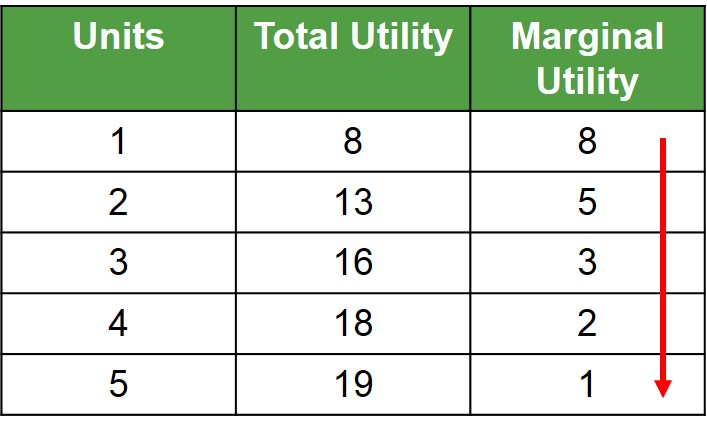The utility received from purchasing an extra unit of a good.
Below is a table that shows how the level of marginal utility differs from total utility. It is a general feature of consumer preferences that the larger the quantity of a particular good a consumer consumes the less utility the consumer receives for each additional unit. This is because the more of a good that a consumer consumes/buys the less value they derive from it. However, as long as the marginal utility does not become negative, consuming extra units of the good will still increase the level of total utility accruing to the consumer. This is the basic property of monotonicity that all consumers have.
